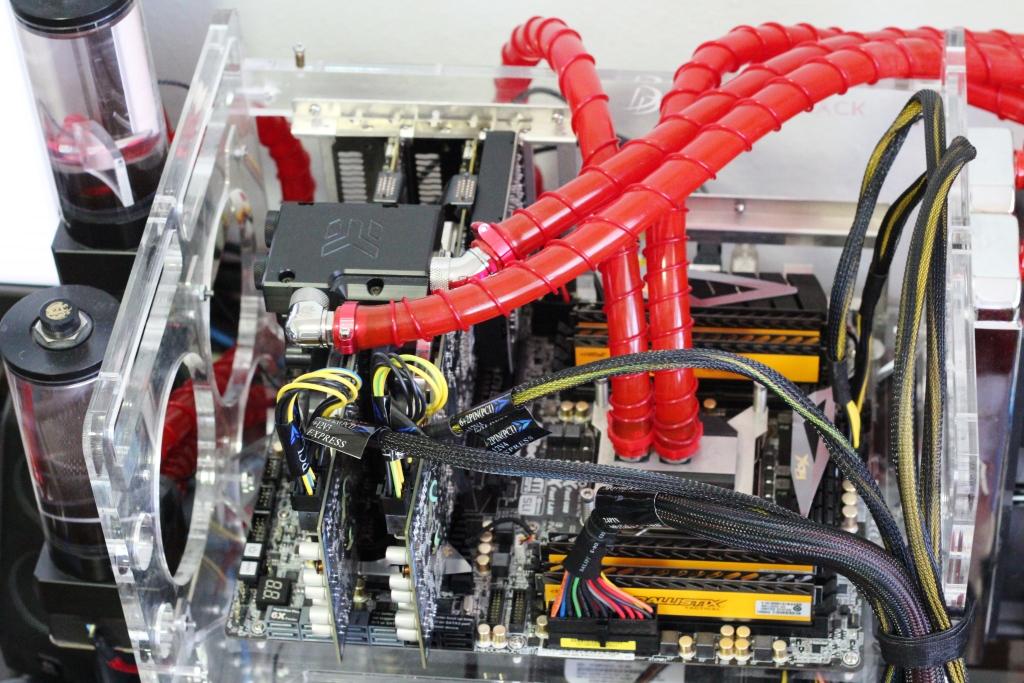BENCHMARK PROTOCOL AND THE TEST BENCH
 In testing, our main objective is to obtain results as pure and as accurate as possible and we want to ensure that no anomalies slip through.
In testing, our main objective is to obtain results as pure and as accurate as possible and we want to ensure that no anomalies slip through.
Simply put, we want to provide you with the absolute best results the tested hardware can provide. Repetition in testing is standard and, if necessary, we may conduct specific tests in Windows 7 safe mode to ensure the OS has little to no influence on the end result.
In order to validate and confirm our findings, testing is supported by industry accepted benchmark programs. All results are displayed through capture of the actual benchmark for better understanding of the testing process by the reader.
Software used for testing by The SSD Review consists of ATTO Disk Benchmark, Crystal DiskMark, AS SSD, Anvil Storage Utilities, along with FutureMark PCMark Vantage. All do a great job of showing us the numbers that we want to see, or dont want to see in some cases, while PCMark Vantage x64 is an excellent program which recreates tests that mimic the average users activity, all the while providing a medium to measure each.
Benchmark software used by The SSD Review can be obtained by clicking on the title of each application as all may be downloaded without cost to the consumer.
Crystal Disk Info displays the SMART attributes that are presented to the user for the Plextor M3. If I might make a suggestion to Plextor, they should improve is the amount of SMART data that is available to the user. For a typical user, this would be enough data, as the drive identification data shows the firmware revision and the SMART data shows any reallocated sectors and read error rates. For more advanced users that would try to determine more advanced health monitoring and endurance of the SSD, drives with more SMART attributes can allow closer monitoring of health attributes. We are aware that Marvell plans to enhance the amount of SMART data in future firmware updates.
ATTO Disk Benchmark is perhaps one of the oldest benchmarks going and is definitely the main staple for manufacturer performance specifications. ATTO uses RAW or compressible data and, for our benchmarks, we use a set length of 256mb and test both the read and write performance of various transfer sizes ranging from 0.5 to 8192kb. Manufacturers prefer this method of testing as it deals with raw (compressible) data rather than random (includes incompressible data) which, although more realistic, results in lower performance results.
These are great results that are right in line with the published specifications. Of note are the great speeds at the lower QD, this is where the vast majority of users will actually notice the difference, and in this region the Plextor M3 is very solid.
 The SSD Review The Worlds Dedicated SSD Education and Review Resource |
The SSD Review The Worlds Dedicated SSD Education and Review Resource | 

How does the M3 compare to the M2?
The M2 is 480/330 read/write and 15K/9K IOPS. The M3 is 510/360 read/write and 70K/65K IOPS. Also, the M2 comes bundled with the Acronis software where as the M3 is bundled with NTI Echo. Both drives have the same Marvell controller. However the M3 uses a Toshiba 24nm NAND as opposed to a Toshiba 32nm NAND found in the M2.
whats the different between Plextor M3 and M3P ?
The M3P is essentially the M3S but with a different firmware which increases performance from 525/445 read/write to 535/450 and from 56K/30K IOPS to 56K/34K IOPS on the 512GB. Also, I believe the M3P is housed in a 7mm casing as opposed to a 9.5mm casing.
If Marvell = faster latency but also lower bandwidth, does that mean if I’m RAID-0’ing 2 SSDs (for higher bandwidth speeds), I’d be better off with a Marvell controlled pair of SSDs rather than a pair of SandForce controlled ones?
Not sure how to answer this question but you can check out the M2 RAID benchmark results https://www.plextoramericas.com/index.php/forum/27-ssd/4716-128-gb-m2p-benchmarks?limit=6&start=18#4734